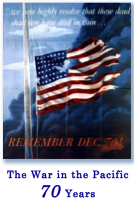 On today's date in 1943, Dad's ship, USS Vestal, began overhauling the tank landing ship, LST-448. It was one of at least a dozen LSTs Vestal repaired while stationed at Espiritu Santo this year. What could not be known at the time, however, was that this particular landing ship was about to meet an untimely end.
On today's date in 1943, Dad's ship, USS Vestal, began overhauling the tank landing ship, LST-448. It was one of at least a dozen LSTs Vestal repaired while stationed at Espiritu Santo this year. What could not be known at the time, however, was that this particular landing ship was about to meet an untimely end.
By 1942, there was an urgent need for relatively large, ocean-going ships capable of shore-to-shore delivery of tanks and other vehicles in amphibious assaults. The LSTs were designed with a large ballast system that could be filled for ocean passage and pumped out for beaching operations. The keel for the first LST was laid down in June 1942. The first LSTs were completed by October, and 23 were in commission by the end of the year. Over a thousand of these ships were completed in American shipyards by war's end.
 |
| A WWII LST and Rhino Barge Source: WW2HQ |
LSTs were indispensable for supporting amphibious operations in Europe and in the Pacific. Constructed with the capacity to carry multiple tanks, wheeled and tracked vehicles, artillery, construction equipment, and military supplies, these remarkable ships could actually land their cargo on the beach. In addition to cargo, LSTs were also equipped with sectional pontoons carried on each side of the ship, to either construct wide floating platforms ("Rhino Barges") or use as causeways. Connected to the bow ramp, the causeways enabled payloads to be delivered ashore from deeper water or where a beachhead would not allow the vessel to be grounded. The LSTs also could transport troops, with accommodations for 16 officers and 147 enlisted men in addition to her own crew complement of 7 officers and 104 enlisted men.
Armed with 2 twin and 4 single 40MM, plus 12 single 20MM guns, LSTs had the capacity to defend themselves. However, the enemy considered them an important target, and when beached they were vulnerable. Nevertheless, their structural design provided unusual strength on the beach and remarkable buoyancy at sea.*
 |
| USS LST-485, which Vestal also worked on in August 1943 Source: NavSource Online |
Launched in December 1942, LST-448, currently being overhauled on this date by Vestal's crew, began her war service in early 1943, carrying war materials to Australia. From there LST-448 began regular convoy runs to the Solomon Islands. She took part in routine resupply and also hostile shore landings as Allied forces consolidated their control of the islands around Guadalcanal and New Georgia.
LST-448 supported the Allied landing on Vella Lavella Island in the Western Solomons in August 1943. After loading a contingent of New Zealand soldiers at Guadalcanal, she left for Vella Lavella on September 29. She landed on the beach at Maravari on October 1. After her successful beaching, the ship began unloading her supplies of men and material. Stranded by the outgoing tide as her crew continued to unload her, LST-448 became a target for approaching Japanese dive bombers. Firing from its guns at the incoming planes, joined by supporting fire from guns on shore, the Japanese planes were still able to drop several bombs onto the beached ship. Two bombs made a direct hit, killing or wounding 36 of her crew and 16 of the New Zealand troops. Near misses alongside the ship caused further damage, and a fire consumed much of the forward end of the ship. Explosions of her cargo of fully-fueled vehicles and munitions contributed to the ruin.
Although severely damaged, nevertheless LST-448 was refloated. She was pulled off the beach at Maravari and under tow toward Guadalcanal when she took on water and sunk on October 5.
LST-448 earned the Navy Unit Commendation and 2 Battle Stars for her World War II service.
* The fascinating and detailed story of a sister ship, the USS LST-481, is told by John H. Dougherty at his website, The USS LST-481.
Sources: USS Vestal War Diary, August 1943; Dictionary of American Naval Fighting Ships, Vol. 7
I just found this. I am wondering if your dad is still living. I'm trying to find the LST my dad was on. He was on two LST's that were bombed and thinking this LST 448 was the one that sent him home with a medical discharge for losing his hearing. Hope to hear from you.
ReplyDeleteThanks for your comment. I lost my dad a few years back. I'm sorry that I don't have the info you seek about your father. Have you tried searching for him at fold3.com?
ReplyDeleteSorry for your loss too. Yes I searched on 3Fold and only have the muster records on LST-39 He had to have gotten onto a new ship in Pearl Harbor as 39 saw no action.
ReplyDeleteNavy records can't find much either. I think he was moved so fast and being war, the war diary was not complete.
There is also the LST Association (https://www.uslst.org) and other sailors' associations you might google for.
ReplyDeleteRegrettably, my uncle Ray Fallon Motor Machinist Mate 2C was killed that day on LST 448
ReplyDelete